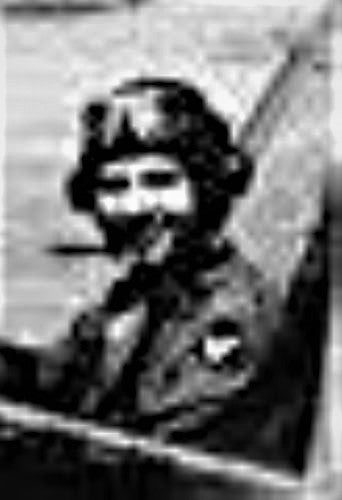- First Lieutenant
- WW II
Biography
Leo Francis Skenyon was born on 21 May 1919 and grew up in Providence, Rhode Island. He was the son of Patrick and Mary Skenyon. Leo attended local schools in Providence, Rhode Island and entered Rhode Island State College (RISC) in September 1936 with the class of 1940 majoring in Engineering. He participated in the RISC Army ROTC program while a student at RISC. Leo left RISC after his sophomore year and enlisted in the U.S. Army Air Forces on 15 March 1942.
Private Leo Francis Skenyon graduated from the ten-week U.S. Army Air Force preflight training program, a combination of enlisted basic training and officer candidate school. He was assigned as a cadet at the Flying/Aviation Cadet Training Program, U.S. Army Air Forces Training Center, Duncan Field, Alabama. Upon completion of flight school, he was awarded his pilot’s wings, commissioned a Second Lieutenant and assigned to the 162nd Fighter Squadron, 363rd Fighter Group, 9th Air Force, Membury Airfield, England.
The 162nd Fighter Squadron, 363rd Fighter Group participated in escorting bombers and fighter-bombers to targets in France, Germany and low countries; and they strafed and dive bombed trains, marshalling yards, bridges, vehicles, airfields, troops and gun positions on the European continent. The 363rd supported the D-Day invasion of Normandy in June 1944 by escorting troop carriers and gliders, attacking enemy positions near the front lines and then repositioned to the continent at the end of June to take part in the allied drive to Germany. In the two weeks following D-Day, the 363rd was credited with 41 victories but lost 43 of its own aircraft in the process, mostly to ground fire.
The pressing need for tactical aerial reconnaissance during the Normandy campaign led the 363rd Group to be converted to a photo-reconnaissance unit. The 363rd Tactical Reconnaissance Group (TRG) was formed at Le Mans, France in late 1944. The 363rd TRG was the “eyes” of General George S. Patton’s Third Army during its advance through France and later during the Allied invasion of Germany. During September 1944, the group flew 170 missions in 19 days reconnoitering the area along and beyond the Siegfried Line where German armies were building up reserves. During November, missions were flown over the Ruhr and Rhine valleys and over Frankfurt, Mannheim, Wiesbaden and Ludwigshafen, many of which were heavily defended. On 24 November 1944, 1LT Leo Skenyon took off from Le Mans, France to reconnoiter marshalling yards to see if German reinforcements were being sent in from other parts of Germany. His Mustang had been hit by a German fighter and began spitting smoke and had engine problems. While evading the German fighter, losing power, flying low to the ground, he attempted to clear a mountain. When the plane touched the top of the trees, he ejected from the cockpit and sadly he died during the crash.
First Lieutenant Leo Francis Skenyon was cited for Gallantry in Action and awarded the Purple Heart and the Air Medal (Posthumously). First Lieutenant Leo Francis Skenyon, U.S. Army Air Forces, was a hero in defeating the German forces during World War II. He is another son of Rhode Island and America who answered the call to duty and gave his life during World War II. He is a heroic member of the “Greatest Generation.”
Education
1940

